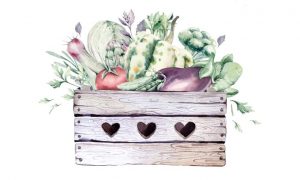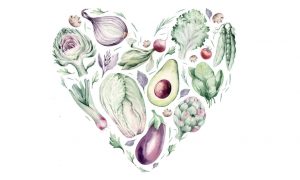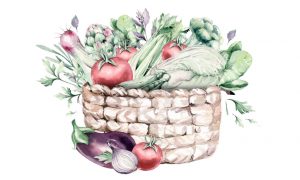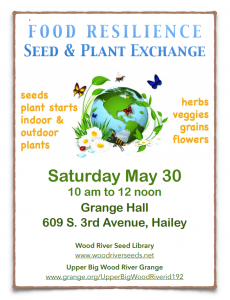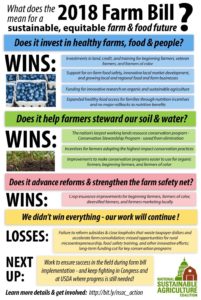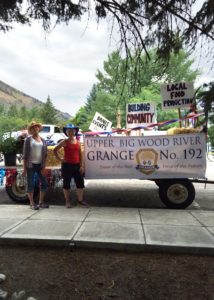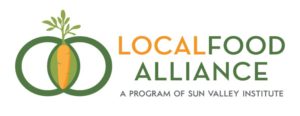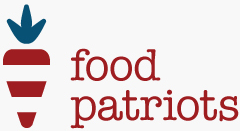Local Food Alliance
Sharing sustenance.
May 12, 2020Instead of Buying Guns or Hoarding Food, Let’s Feed Each Other
YES! Magazine/Solutions Journalism
by Michele Bigley
From my patio in Santa Cruz, California, I watched a scrub jay deliver a peanut shell to its oak-tree home. My neighbor hollered hello from the street below, explaining that she was afraid to go to the store for groceries. “A person was held at gunpoint at the Target,” she said. “Everyone’s going crazy.”
My grandparents had “war gardens” in the 1940s, and small, potted remnants from that time took root on their patios well into their golden years. I’d often asked them to teach me how to grow veggies. But they argued that because grocery store shelves were fully stocked again, they didn’t think it was necessary to teach me how to put in the work of growing my own food.
Yet now our local farms have waiting lists for their Community Supported Agriculture weekly deliveries.
We can plant seeds that take a little weight off our overburdened food system and grocery store workers.
Inspired by all this generosity, I wanted to go beyond simply planting a victory garden for my family’s sustenance. I wanted the sustenance to be shared, so I sent out a blast on Nextdoor.com. Within minutes, people offered up compost bins, some more seeds and soil, starter pots. My septuagenarian neighbors brought over tools, advice, and veggie starts. Another guy I didn’t even know was scavenging scrap wood from a construction site nearby; when I asked about how to make a garden bed, he lugged over some wood, and constructed one in my yard.
The retired crisis therapist across the street noticed the raised bed and said, “In the news, we’re seeing the worst of humanity right now, but around us we’re experiencing extreme acts of kindness, too.”
Many Americans have been raised with this ethos of individualism. I, too, was taught to take care of my family above all else. With the threats of joblessness and hunger in every community, I get that urge to protect what’s ours, especially when we’re terrified that a stranger’s cough can land us in the ICU.
But in the 1930s and 1940s, 20 million Americans stepped up in a time of great global terror. They planted gardens in abandoned lots, on patios, and on rooftops. Today, too, we have the potential to shift how we engage with our world. In fact, social distancing requires it. We can broaden our perspectives and open our hearts to people with whom we might share nothing more than proximity. They will be the ones there for us in crisis. They will deliver chicken soup if we’re sick. They will check in on us if they don’t see us out and about. And they will let us know when the grocery store finally has some Clorox wipes.
Now six weeks into our shelter-in-place, the spinach and strawberries, tomatoes and kale, cucumbers and peppers are sprouting. When I called my neighbor to revel in these tiny green victories, she told me to look on my front stoop. There, I found a pack of toilet paper
Blaine County IDAHO Local Food Alliance
sunvalleyinstitute.org
DIGITAL FOOD GUIDE
Help us connect you with farms and ranches, farmers markets, and restaurants serving locally grown food! The new print version of our 2020 Wood River Valley Locally Grown Guide will hit local magazine stands, visitors’ centers and other regional venues in a matter of days. Now, we are updating our online food guide to include all the same business and non-profit listings, visuals and links, so community members and visitors can find local food with a few simple clicks.
$1 billion per page.
January 9, 2019“On December 20, DT signed the Agricultural Improvement Act of 2018 (commonly knows as the Farm Bill) into law. The bill, projected to cost $28 billion over the next five years, is one of the largest spending packages in the country, doling out money for low-income nutrition assistance, crop insurance, commodity subsidies and conservation programs, among other things. Learn more about the triumphs and failures of the new farm bill from Marion Nestle on Food Politics and Dan Imhoff on Civil Eats.” -Local Food Alliance
The bill takes up 807 pages, with a table of contents of 11 pages. It will cost taxpayers $867 billion over ten years. That’s more than $1 billion per page.
by Marion Nestle
SNAP
Recall that more than 75% of Farm Bill expenditures go for SNAP—The Supplemental Nutrition Assistance Program (formerly Food Stamps).
The “bipartisan win”? Attempts to cut SNAP expenditures and introduce work requirements failed to pass (whew), although Congress is still working on ways to cut enrollments.
Commodity payments
The bill allows payments to more distant relatives of farm owners—cousins, nieces, nephews—a gift to the already rich. Payments can still go to those earning more than $900,000 a year in adjusted gross income (sigh).
Organics
The bill authorizes $395 million in research funding over the next 10 years, and small amounts for data collection, offset of certification costs, and technology upgrades. But the bill weakens restrictions on chemicals that can be used in organic production.
Hemp
The bill grants $2 million a year for support of hemp as a crop, and authorizes USDA to study the economic viability of its domestic production and sale. It also authorizes Indian tribes (that’s the term the bill uses) to grow hemp.
Cuba
The bill allows funding for USDA trade promotion programs in Cuba.
The Managers recognize that expanding trade with Cuba not only represents an opportunity for American farmers and ranchers, but also a chance to improve engagement with the Cuban people in support of democratic ideas and human rights…The Managers expect that the Secretary will work closely with eligible trade organizations to educate them about allowable activities to improve exports to Cuba under the Market Access and Foreign Market Development Cooperator Programs.
https://www.foodpolitics.com/2018/12/the-2018-farm-bill-more-of-the-same-old-same-old/
https://civileats.com/2018/12/13/despite-small-wins-the-new-farm-bill-is-a-failure-of-imagination/
JOIN THE GRANGE
Founded in 1924, Upper Big Wood River Grange, aka the Hailey Grange, is a nonprofit, nonpartisan, fraternal organization that advocates for rural America and agriculture. It also is home to the Wood River Seed Library’s Seed Vault. Learn about becoming a member at the Grange’s January 17 Meeting and Annual New Member Drive – 7:15-8:45pm, at Grange Hall, 609 South 3rd Ave. in Hailey. Guest speaker Aimée Christensen, founder and executive director of Sun Valley Institute, will talk about resiliency and food-related risks and opportunities before us.
Local Food Alliance
April 9, 2015Local Food Alliance
—
‘Food Patriots’
Screening at Magic Lantern Cinema
Thursday, April 30th, 7pm
—
Local Food Alliance screens food education films in partnership with the Sun Valley Center for the Arts. We are solution-focused and proud to show “Food Patriots” to our community.
